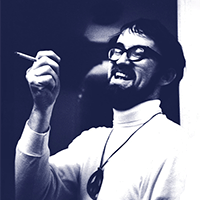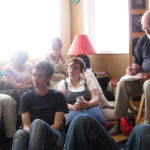The art of walking
Sometime after arriving at Evergreen in 2005, as green as green can be, I called Dan from a landline in a rental that was far more grown up than I was. I asked him what Evergreen students wanted. “They want to do things,” he said. “They want to learn how to march.”
It took me years to figure out how to follow that advice, even longer to understand how much Dan had risked through his uncompromising commitment to walking the talk.
Education had always been theoretical for me, a refuge from the real. But eventually I inched my way across the divide between theory and practice. And I came to realize that the only thing I cared about practicing was forging connections between students and showing them how to use those connections to move together in concert—in spite of fear, in spite of difference.
Dan told me in 2005 that students should never be surprised by their evaluations. The fact that I could write a piece of well-crafted prose that moved them to tears was not the point. If it was news to them, it meant that we had missed the point. It wasn’t what I thought about them—their unique gifts, their hard-won victories. It was a question of whether something in them had moved, and whether they understood what that movement meant.
Dan taught by walking around. Dan charted networks of campus politics by walking around. Dan maps his neighborhood and all its human potential by walking around. More slowly, now, and in smaller circles. But the urgency of the act hasn’t changed. And those of us lucky enough to walk by his side for a little while continue to be moved.


